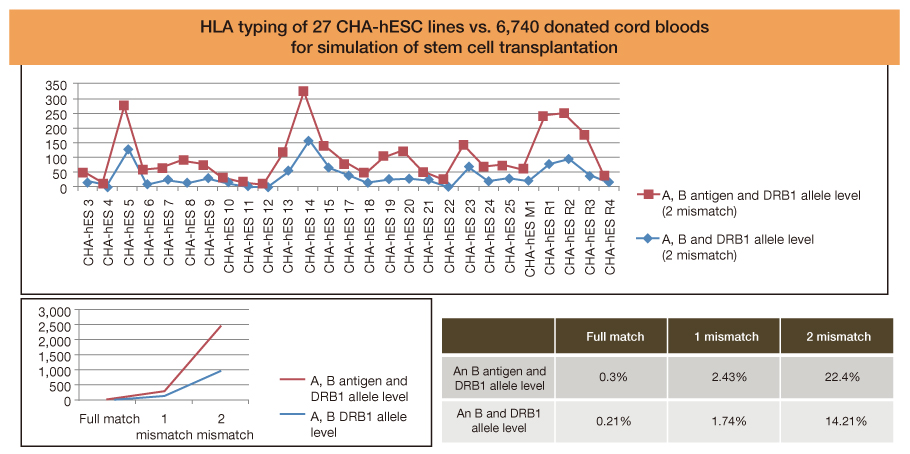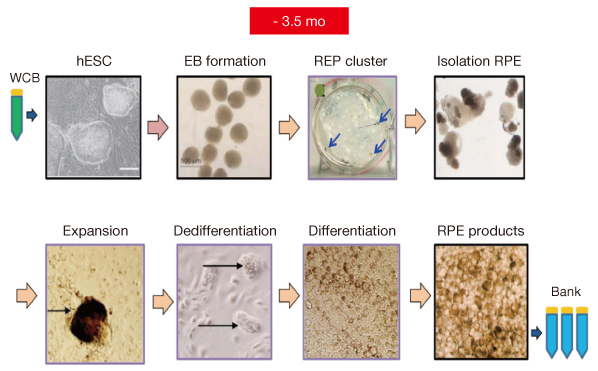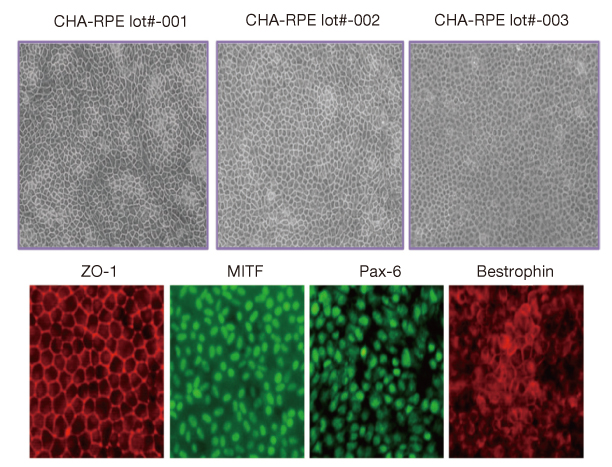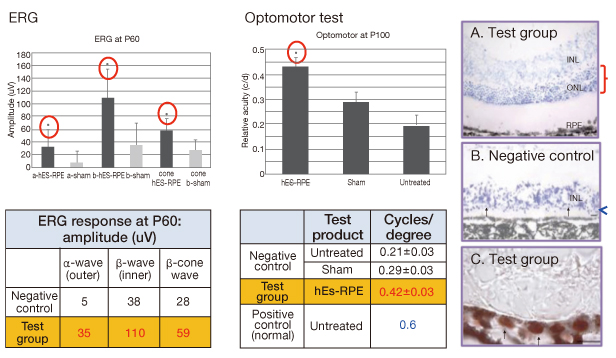J Korean Med Assoc.
2011 May;54(5):454-461. 10.5124/jkma.2011.54.5.454.
Clinical application of human embryonic stem cells
- Affiliations
-
- 1CHA Stem Cell Institute of CHA University, Seoul, Korea. stem_chung@naver.com
- 2CHA Bio & Diostech, Inc., Seoul, Korea.
- KMID: 2190701
- DOI: http://doi.org/10.5124/jkma.2011.54.5.454
Abstract
- Recent advances in stem cell biology, including the development of optimized cell type-specific culture systems, and the broader understandings of biochemical and molecular signals involved in cell self-renewal and differentiation have brought cell-based therapy closer to practical application. As of now, at least 250 adult stem cell therapies are being used or tested in clinical situations. Stem cells have two important properties that distinguish them from other types of cells; they can both proliferate without changing their phenotypes indefinitely, and they also can differentiate into one or more new kinds of cells depending on their culture conditions. Thus, stem cell therapy could be most effective for treating the diseases that are marked by the loss of cells. The typical examples are Parkinson's disease, Alzheimer's disease, diabetes, heart failure, blindness, spinal cord injury, and stroke. Additionally, stem cell derivatives can be used in drug discovery as well. In the last decade, various types of stem cells have been identified from preimplantation stage embryos, fetuses, placentas, and adult tissues. Moreover, it is now almost a common practice to produce induced pluripotent stem (iPS) cells from various adult somatic cells using only a few defined factors. Thus, it is feasible that patient-specific stem cells will be generated with less controversy in the near future. However, human embryonic stem (ES) cells firmly remain "the gold standard" because of their greatest potential to become any type of cell in the body. The vast knowledge obtained from human ES cell research in the past decade has made cell-based therapy more promising than ever. Even the recent establishment of iPS cell technology is the culmination of human ES cells research. In our laboratory, interesting human cardiovascular cells including endothelial precursor cells and beating myocardiac cells, artificial blood cells, and retinal pigment epithelial cells were successfully differentiated and their therapeutic potential was confirmed after cell transplantation into animal models. Thus, here, the current research status of human embryonic stem cell-based therapy will be introduced and the future directions of stem cell applications in clinical trials will be discussed.
MeSH Terms
-
Adult
Adult Stem Cells
Alzheimer Disease
Artificial Cells
Biology
Blindness
Blood Cells
Cell Transplantation
Drug Discovery
Embryonic Stem Cells
Embryonic Structures
Epithelial Cells
Fetus
Heart Failure
Humans
Induced Pluripotent Stem Cells
Models, Animal
Parkinson Disease
Phenotype
Placenta
Retinaldehyde
Spinal Cord Injuries
Stem Cells
Stroke
Transplants
Retinaldehyde
Figure
Cited by 1 articles
-
Stem Cell Properties of Therapeutic Potential
Geom Seog Seo
Korean J Gastroenterol. 2011;58(3):125-132. doi: 10.4166/kjg.2011.58.3.125.
Reference
-
1. Thomson JA, Itskovitz-Eldor J, Shapiro SS, Waknitz MA, Swiergiel JJ, Marshall VS, Jones JM. Embryonic stem cell lines derived from human blastocysts. Science. 1998. 282:1145–1147.
Article2. Draper JS, Andrews PW. Embryonic stem cells: advances toward potential therapeutic use. Curr Opin Obstet Gynecol. 2002. 14:309–315.
Article3. Lerou PH, Daley GQ. Therapeutic potential of embryonic stem cells. Blood Rev. 2005. 19:321–331.
Article4. Xu C. Progress and prospects of human pluripotent stem cell research. Curr Stem Cell Res Ther. 2010. 5:205–206.5. Lee JE, Kang MS, Park MH, Shim SH, Yoon TK, Chung HM, Lee DR. Evaluation of 28 human embryonic stem cell lines for use as unrelated donors in stem cell therapy: implications of HLA and ABO genotypes. Cell Transplant. 2010. 19:1383–1395.
Article6. Phase I trial of GRNOPC1 [Internet]. cited 2010 Oct 11. Menlo Park (CA): Geron Corporation;Available from: http://geron.com/GRNOPC1Trial/grnopc1-sec1.html.7. Klimanskaya I, Hipp J, Rezai KA, West M, Atala A, Lanza R. Derivation and comparative assessment of retinal pigment epithelium from human embryonic stem cells using transcriptomics. Cloning Stem Cells. 2004. 6:217–245.
Article8. Lund RD, Wang S, Klimanskaya I, Holmes T, Ramos-Kelsey R, Lu B, Girman S, Bischoff N, Sauvé Y, Lanza R. Human embr-yonic stem cell-derived cells rescue visual function in dystrophic RCS rats. Cloning Stem Cells. 2006. 8:189–199.
Article9. Lu B, Malcuit C, Wang S, Girman S, Francis P, Lemieux L, Lanza R, Lund R. Long-term safety and function of RPE from human embryonic stem cells in preclinical models of macular degeneration. Stem Cells. 2009. 27:2126–2135.
Article10. Lu SJ, Feng Q, Caballero S, Chen Y, Moore MA, Grant MB, Lanza R. Generation of functional hemangioblasts from human embryonic stem cells. Nat Methods. 2007. 4:501–509.
Article11. Lu SJ, Li F, Yin H, Feng Q, Kimbrel EA, Hahm E, Thon JN, Wang W, Italiano JE, Cho J, Lanza R. Platelets generated from human embryonic stem cells are functional in vitro and in the microcirculation of living mice. Cell Res. 2011. 21:530–545.
Article







